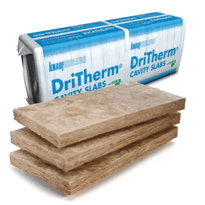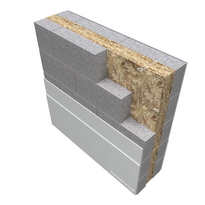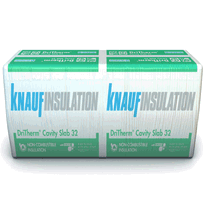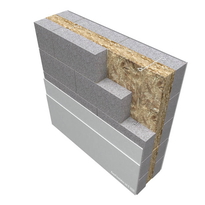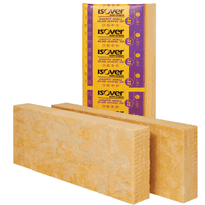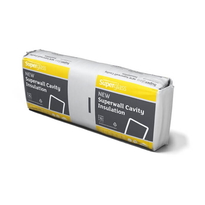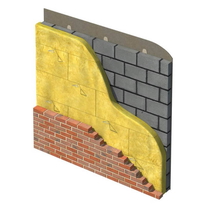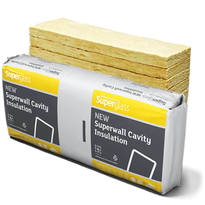Understanding the Basics of Full Fill Cavity Insulation
Understanding full fill cavity insulation involves grasping both the materials used and the installation techniques involved. This method fills the entire wall cavity with insulating material, effectively reducing gaps that can lead to heat loss or moisture problems. [The insulation material used must meet specific standards, such as BBA approval and fire classification A1, to ensure safety and effectiveness.](https://www.onlineinsulation-sales.com/blog/the-benefits-of-full-fill-cavity-wall-insulation/) Common materials include polyisocyanurate (PIR) boards, glass mineral wool, expanded polystyrene (EPS) beads, and polyurethane foam, each offering specific benefits such as high thermal performance, moisture resistance, or ease of installation. The installation process typically involves drilling small holes into the outer wall leaf to inject the insulation under pressure, ensuring comprehensive coverage without voids. Prefabricated boards may be utilised for a seamless fit, and the process is carefully executed to minimise air gaps and prevent sagging. When properly carried out, this approach results in a fully insulated cavity, enhancing the building’s thermal efficiency and durability.
Enhancing Energy Efficiency and Thermal Performance
Full fill cavity insulation enhances energy efficiency primarily by establishing a continuous thermal barrier within the wall structure, thereby minimising heat transfer pathways. By completely filling the cavity, gaps or air pockets that enable heat to escape are eliminated, significantly reducing thermal bridging where heat passes through structural elements.
This creates a more effective insulation envelope that prevents heat loss during winter and helps to maintain stable indoor temperatures. As a result, heating demands decrease, leading to lower energy consumption and reduced heating bills.
Materials such as closed-cell PIR boards provide low U-values, further increasing energy savings even in slender wall profiles. [Proper installation techniques are crucial](https://www.buyinsulationonline.co.uk/blog/full-fill-vs-partial-fill-cavity-wall-insulation-board) to maximize these benefits and ensure long-term performance.
Managing Moisture and Preventing Damp Issues
Managing Moisture and Preventing Damp Issues
Moisture control within cavity walls is crucial for preserving the integrity and safety of a building. Excess moisture can cause structural damage, promote mould growth, and reduce the effectiveness of insulation. Implementing effective strategies involves preventing water ingress, controlling air leakage, and minimising condensation through the careful selection of insulation materials, sealing of gaps, and the installation of suitable vapour barriers tailored to the specific climate zone. [Homes should be air sealed](https://www.retrofoam.com/blog/moisture-in-wall-cavities) to prevent unwanted air exchange, which can carry moisture into wall cavities. Key practices include installing drainage planes to direct water away from foundations, sealing gaps and cracks to prevent air and moisture infiltration, and using vapour retarders to hinder moisture migration through walls. Adapting insulation methods according to local weather conditions ensures optimal performance, while combined with proper installation practices and mechanical ventilation systems to maintain appropriate indoor humidity levels.
Practical Aspects: Installation, Materials, and Long-term Benefits
Proper installation practices are essential to maximising the benefits of cavity wall insulation. Attention to detail during each stage of the process helps ensure a successful outcome.
Wall ties should be positioned at 600 mm centres, placed at least one course below the DPC (damp proof course) to support both the insulation and the structural stability of the wall. [Wall ties must comply with Eurocode 6 standards](https://unilininsulation.co.uk/cavitytherm/installation-guide/), ensuring they are correctly specified for the cavity width and structural requirements to maintain wall integrity.
When installing insulation boards, start 150 mm below the DPC to prevent contact with the ground and to provide effective edge insulation. Each board should be secured at a minimum of three points using suitable clips, with additional ties fitted where necessary to maintain stability. The external leaf of the wall should align with the top of the insulation layer.
Ties should be spaced at 450 mm vertically and 900 mm horizontally, with joints staggered by approximately 600 mm. This staggering helps avoid vertical continuous seams, which can reduce insulation efficiency. Choosing high-quality insulation materials, such as PIR or environmentally friendly options, ensures excellent thermal performance and long-term durability.
This choice helps maximise energy savings, maintain structural integrity, and deliver environmental benefits over the lifespan of the building.
Conclusion
Full fill cavity insulation provides notable advantages in enhancing a building’s energy efficiency and thermal performance by effectively minimising heat transfer through walls. Proper installation, selection of suitable materials, and effective moisture management are crucial to maximise long-term durability and prevent issues such as dampness. Implementing these best practices ensures reliable insulation performance, reduced energy costs, and greater indoor comfort. An accurate understanding of the principles of full fill cavity insulation and its correct application are essential for achieving optimal results and maintaining the integrity of the building over time.
